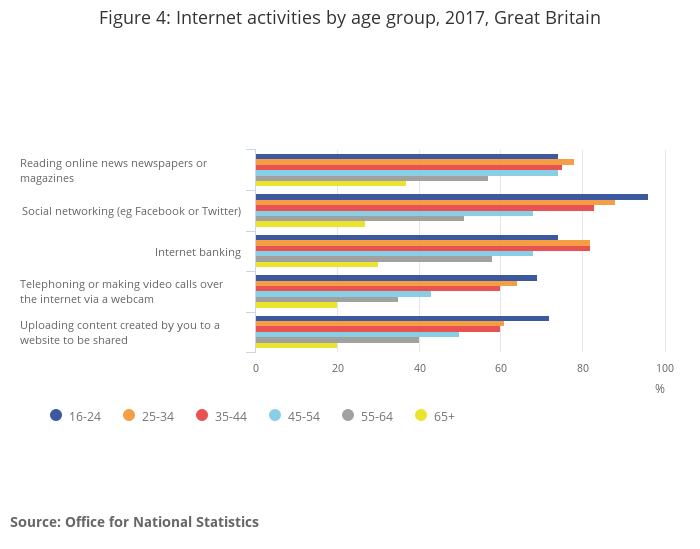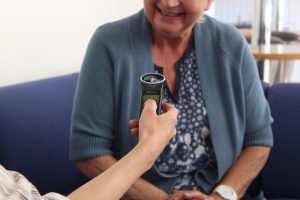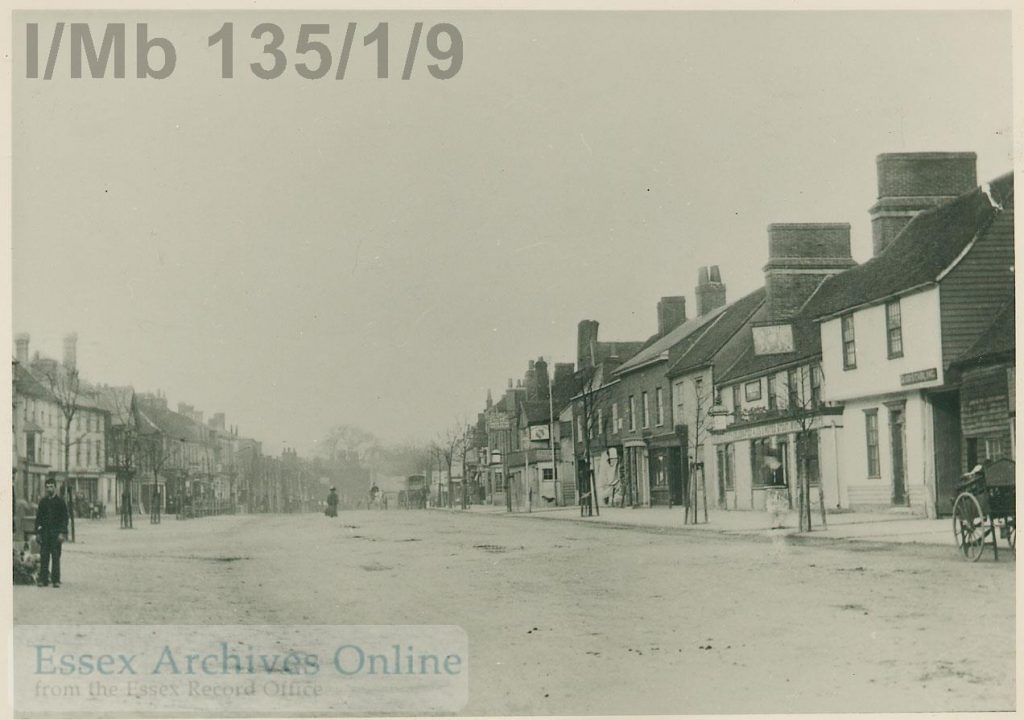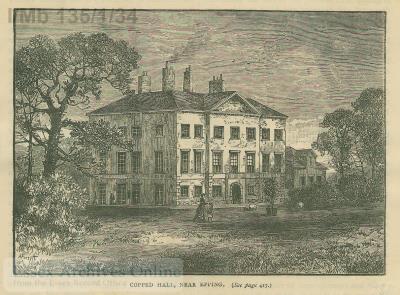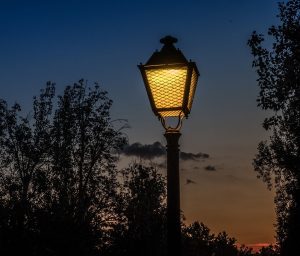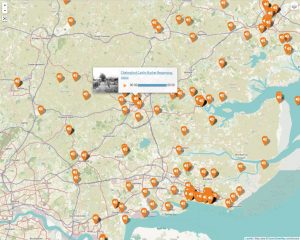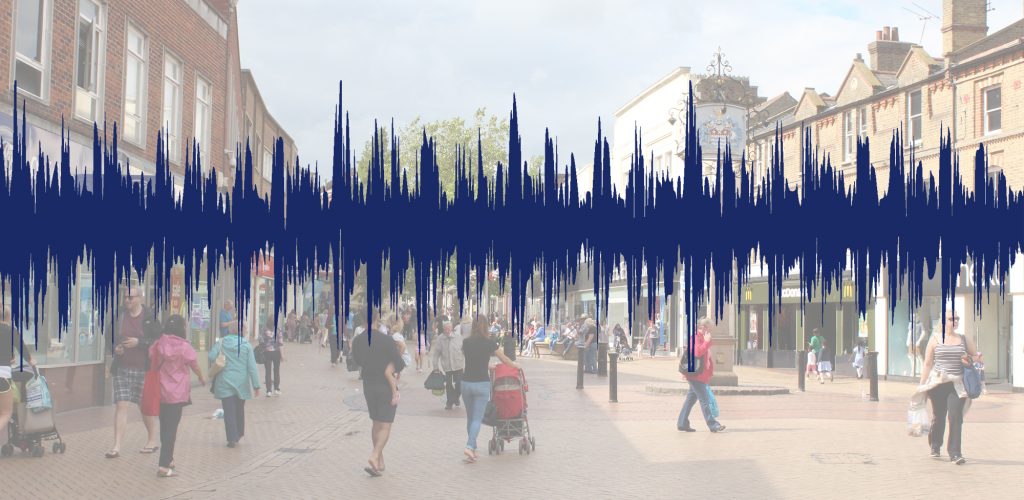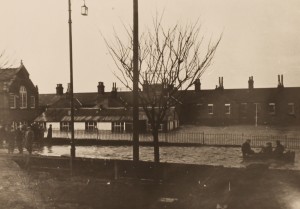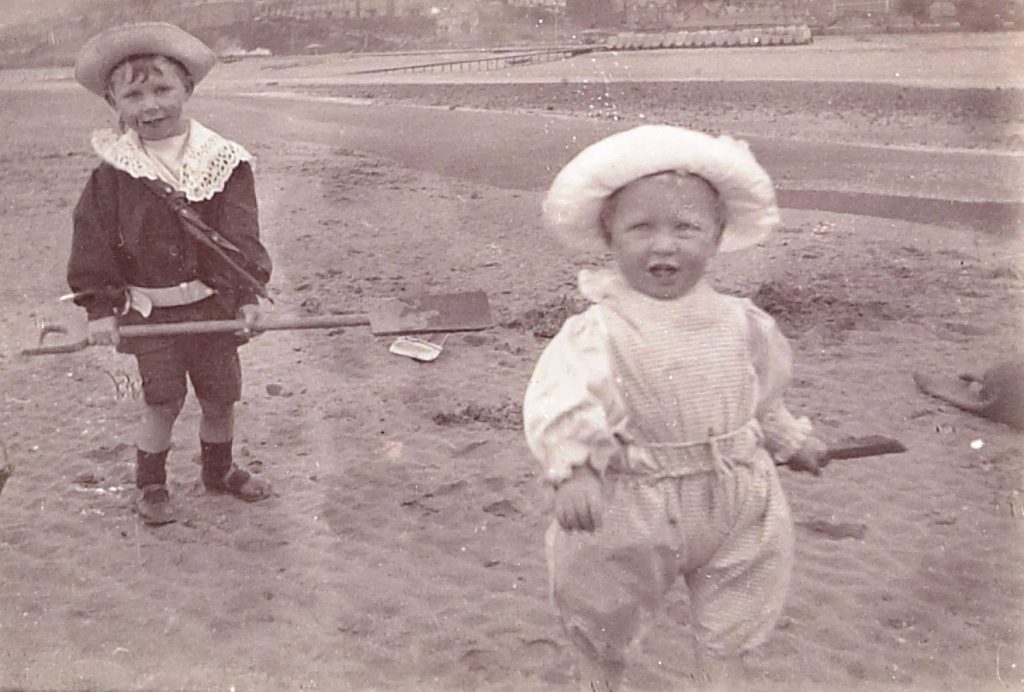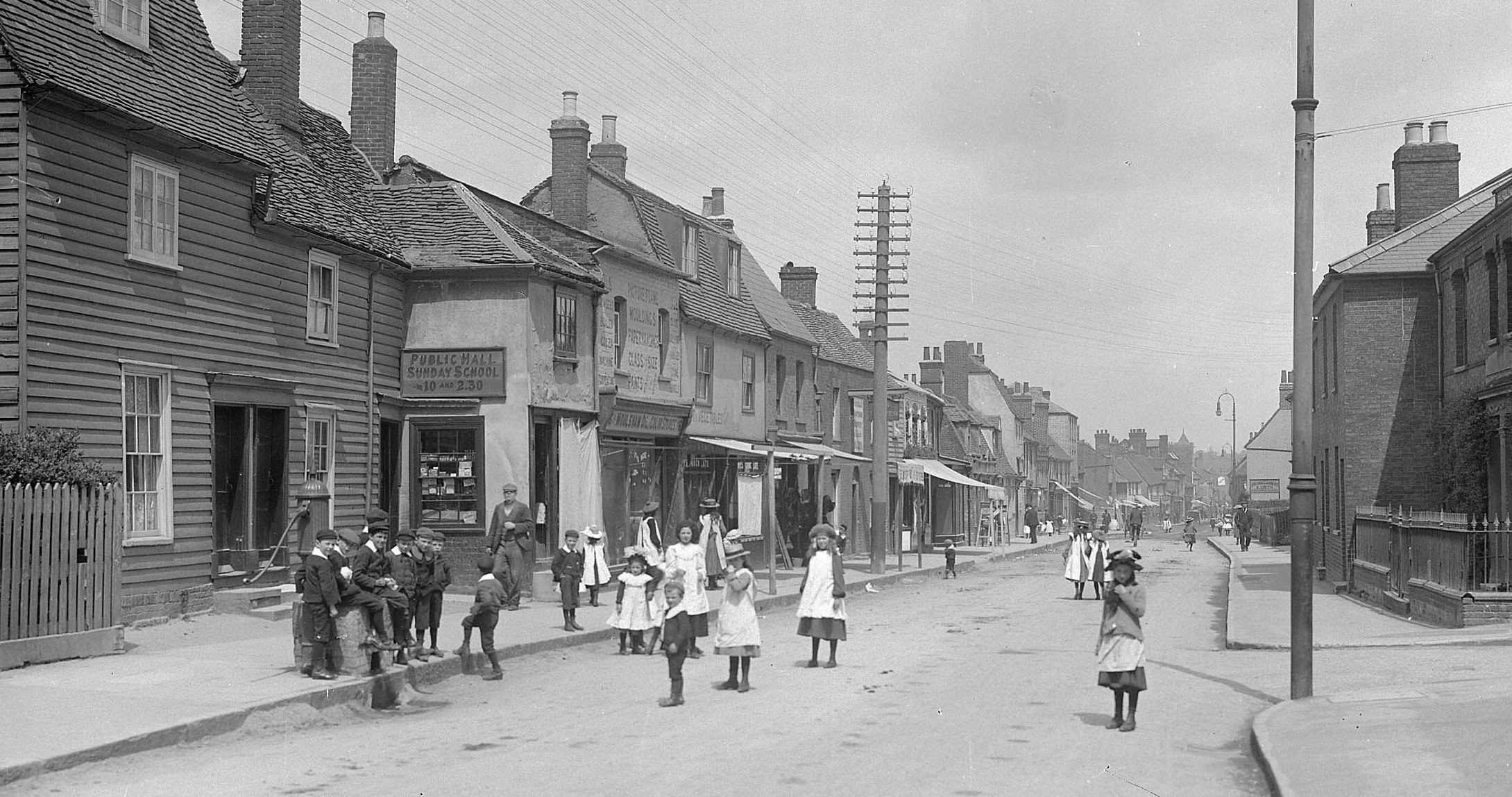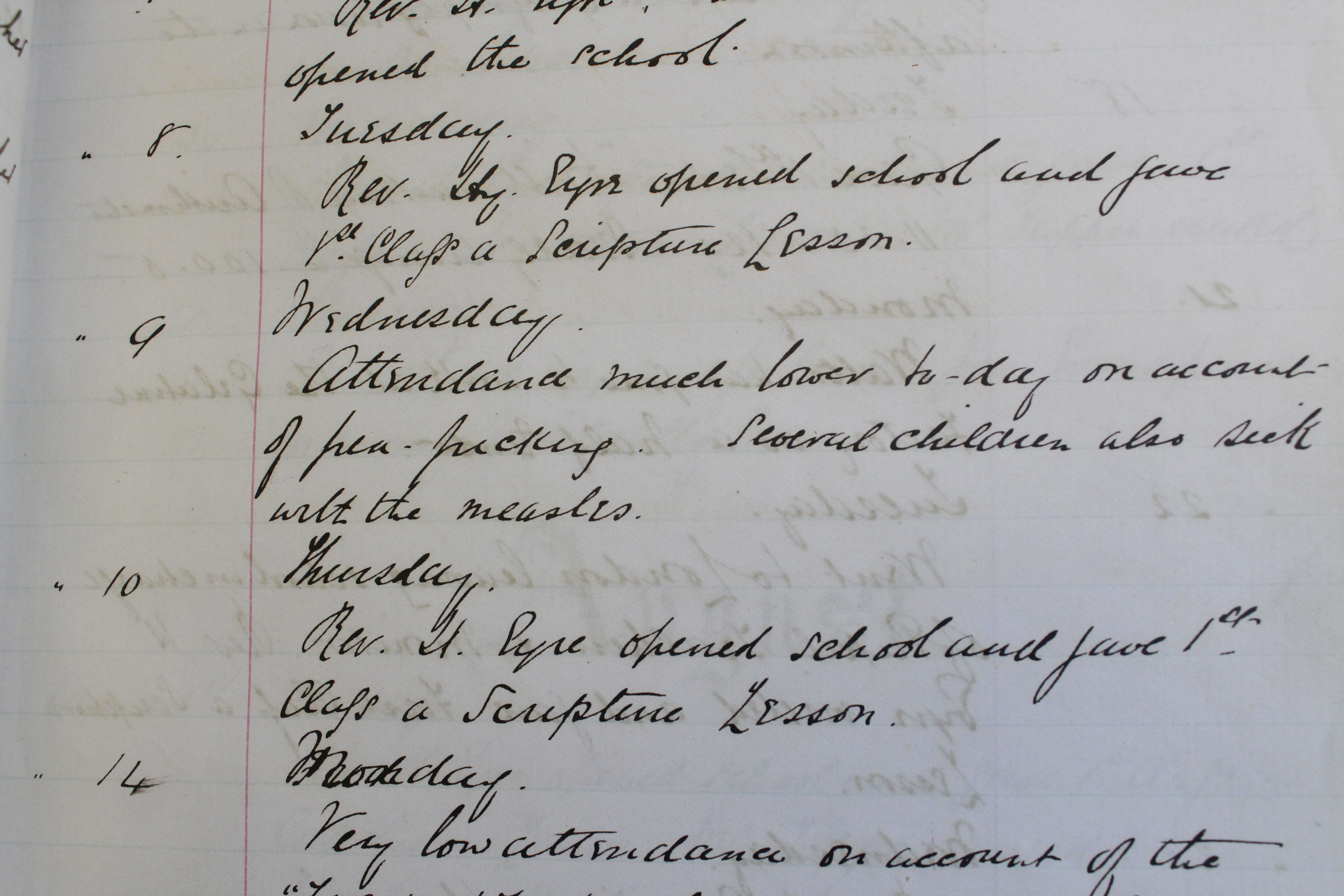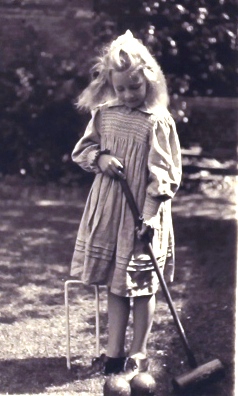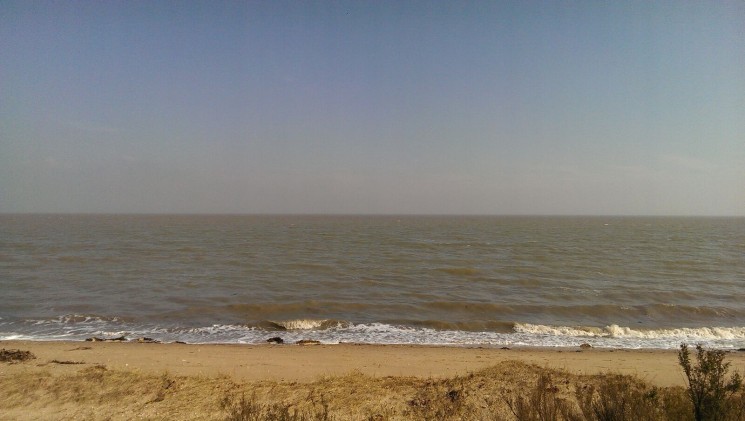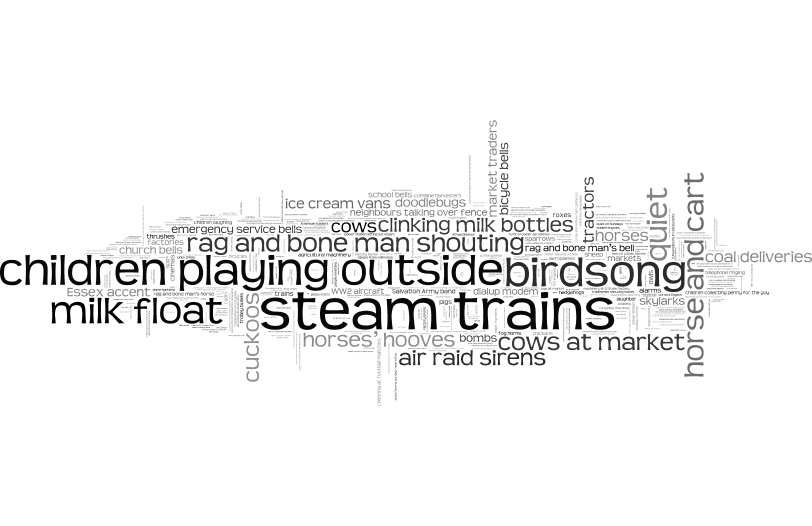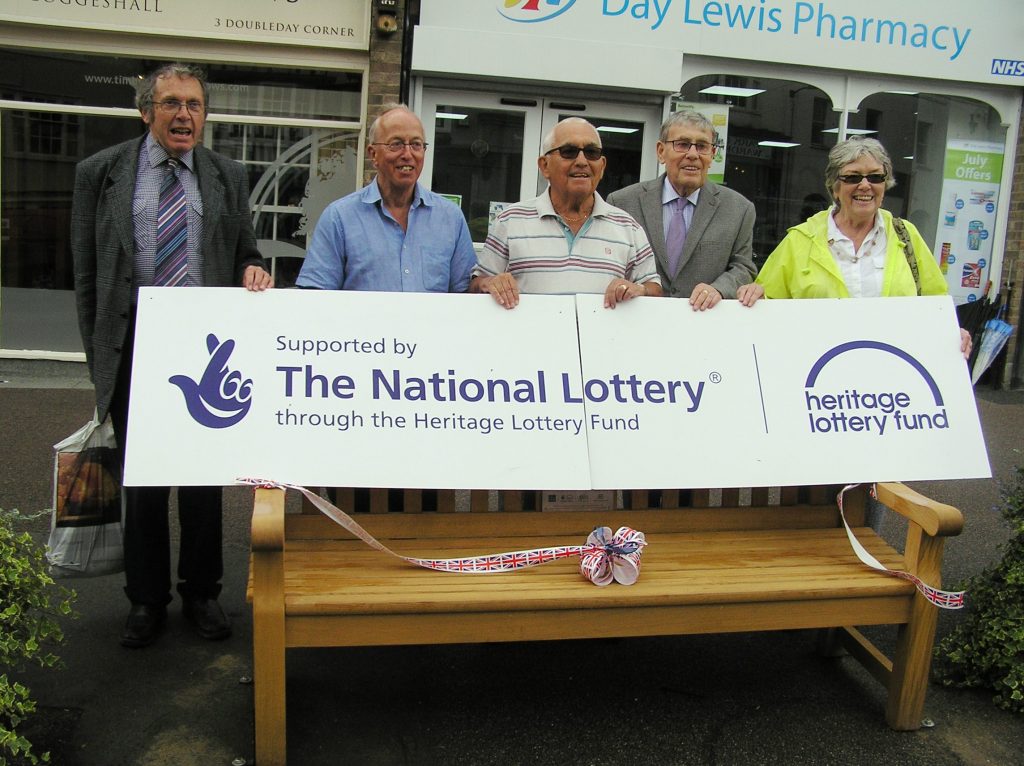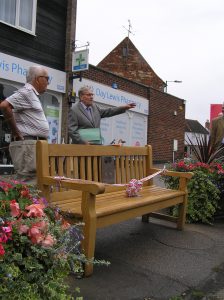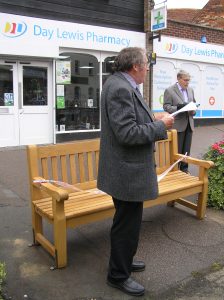Our You Are Hear Project Officer, Sarah-Joy Maddeaux, reflects on the listening bench tour that has been running for the last two years.
On Monday we moved one of the touring You Are Hear listening benches. For the last three months, it has been sitting outside the Guildhall in Finchingfield, a beautiful building lovingly restored and used as a hub for the community. It hosts the library, museum, and a number of classes and activities.
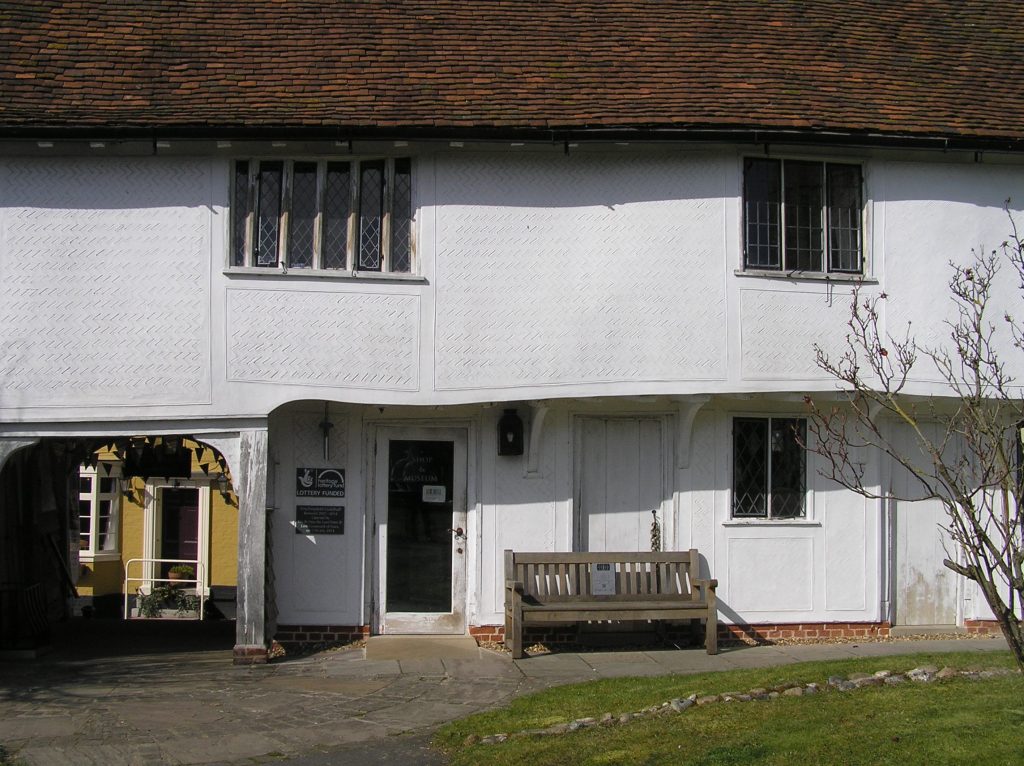
Touring listening bench when it was situated outside the Guildhall, Finchingfield
I selected audio for the bench that showcased aspects of the village history, such as information about straw plaiting, once a significant local industry. I also included clips of memories from village residents, taken from interviews recorded by the Guildhall and recently deposited with the Essex Sound and Video Archive (Acc. SA837).
Roger Guppy sharing memories of growing up in Finchingfield, from an oral history interview recorded by the Guildhall. Used with kind permission from the Guildhall.
I hope these insights into the past helped visitors more fully appreciate the rich heritage of the village, and of the Guildhall in particular.
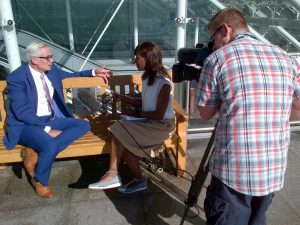
Neil Banks at Stansted Airport being interviewed for BBC Look East in 2016
We have now delivered the bench to its final resting place, outside the METAL arts centre in Chalkwell Park, Southend-on-Sea (more information below). The tour has drawn to a close. In two years, this bench has visited eight locations, ranging from open spaces to shopping centres to Stansted Airport. There, it had its fifteen minutes of fame, when it was briefly featured on BBC Look East.
It has travelled more than 250 miles. The buttons have been pressed over 30,000 times. Around 150 children completed a quiz about the recordings while it was at Belfairs Woodland Centre. We have shared music, poetry, and memories from Essex people about Essex places. Recordings about the location, recordings to reflect the season, or recordings just because I like them and want to show them off.
The statistics show that we have accomplished one of our aims: thousands more people have listened to an Essex Sound and Video Archive recording than would have without the bench. But since we ‘drop and go’, leaving people to discover the bench, it is hard to measure any deeper impact.
I would like to think that the bench has made listeners look again at familiar sights. Did hearing a piece by Thomas Tallis while sitting within sight of where he was once an organist make people value the significance of Waltham Abbey Gardens?
The Walk Fair Singers and The Thameside Waits sing Thomas Tallis’ ‘O Nata Lux’ at New Hall, Boreham in 1993 (SA 1/1287/1, used by kind permission of BBC Essex).
Did the programme about the opening of Stansted Airport’s second runway show how far this busy gateway to Essex has come since its humble beginnings? Did listening to an account of travelling salesmen delivering clothes make shoppers think again about their experience at Lakeside Shopping Centre?
I would also like to think that the bench has taught listeners something new: whether they are visitors to the area or have lived nearby all their lives. For instance, did you know that over 30 species of butterfly have been spotted at Belfairs Woodland Centre, including some of the rarest in the country? Or that Raphael Park has been a public park for over 100 years, with origins as part of a private estate dating back to Saxon times?
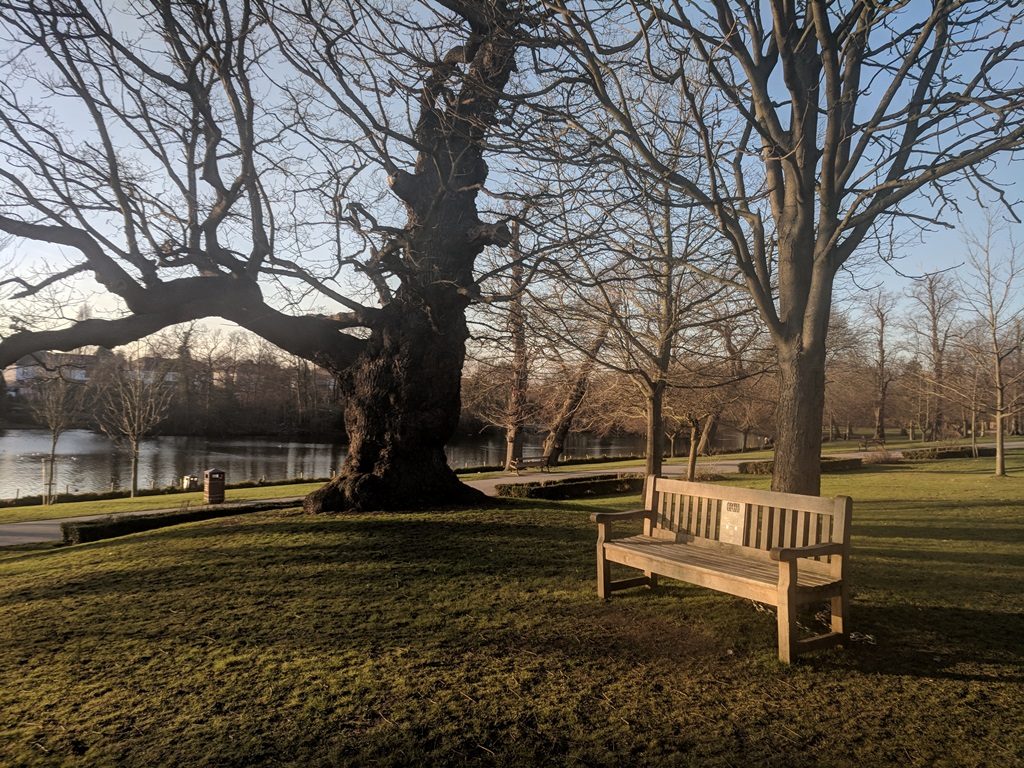
Touring listening bench in Raphael Park. Copyright Jade Hunter.
So, have we accomplished one of the bigger aims of the project? Have we made people rethink the sounds that are around them – the changing accents, the sounds of nature blended with human noise? And have we made people think twice about this diverse, much maligned county based on the sounds that they hear?
We hope that we have – but we would love to hear it from you directly. Have you used our touring bench at any of its venues? Did you have a favourite clip? What did you think of it? Please comment below, e-mail us, or complete a short survey about the project to give us your thoughts.
METAL is an arts organisation with a base at Chalkwell Hall, Chalkwell Park, Southend-on-Sea. This provides space for artist residencies, as well as for a variety of classes and workshops. The listening bench will be incorporated into their NetPark project, aiming to improve well-being by engaging with digital arts in an open setting. Find out more on their website.
Our other touring listening bench will remain at Weald Country Park for the foreseeable future. Meanwhile our touring audio-video kiosks are approaching the end of their tours also: it’s your last chance to catch them at the Cater Museum in Billericay or Rayleigh Town Museum.
We are grateful to the Friends of Historic Essex who sponsored this bench, and to the Heritage Lottery Fund, the main funders behind the You Are Hear project.


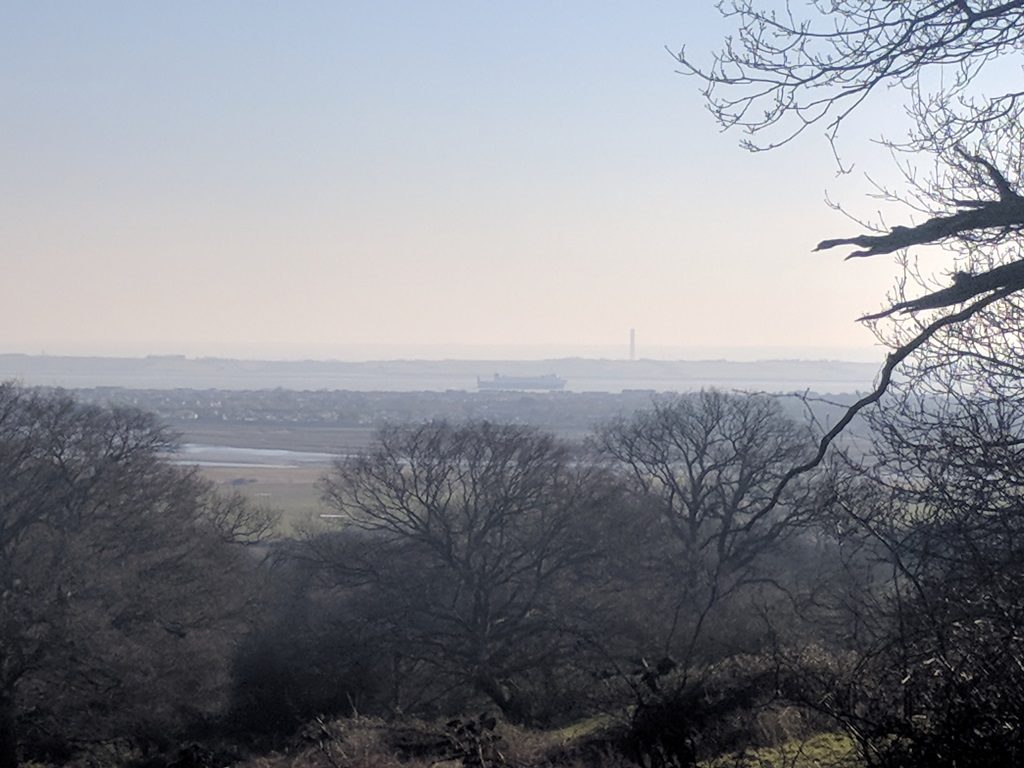
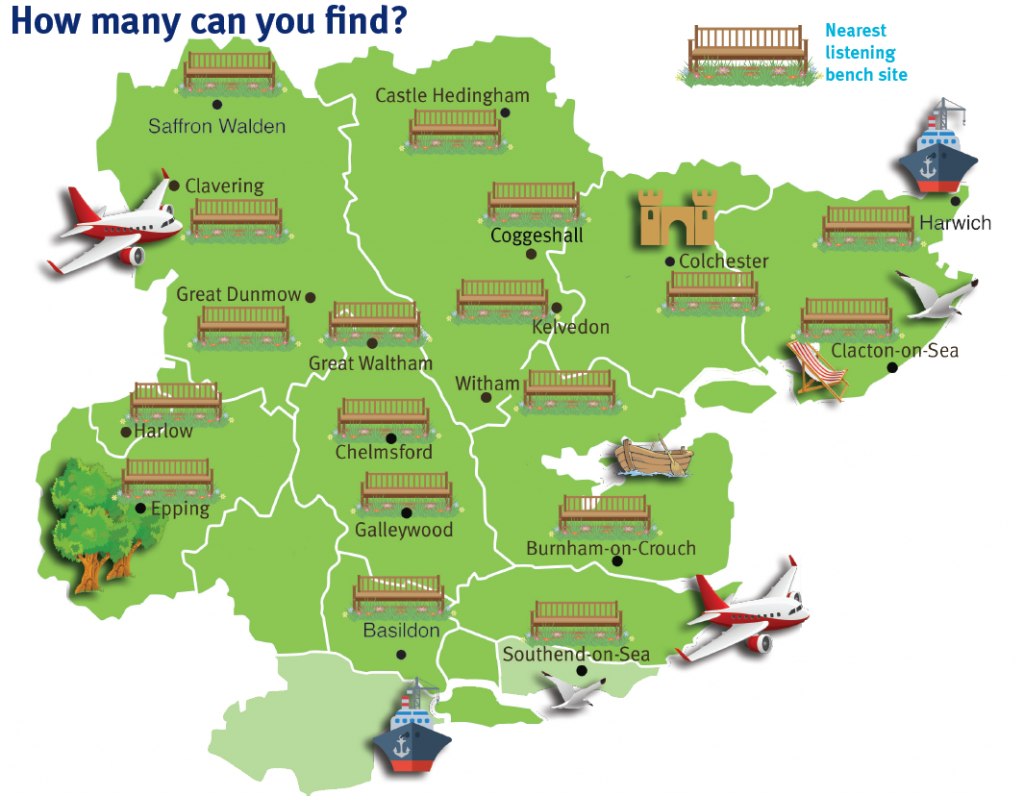 Can you get to all the benches? Please note the touring bench that was in Raphael Park has now moved to outside the Finchingfield Guildhall. The touring bench in Hadleigh Park will shortly be moving to Weald Country Park.
Can you get to all the benches? Please note the touring bench that was in Raphael Park has now moved to outside the Finchingfield Guildhall. The touring bench in Hadleigh Park will shortly be moving to Weald Country Park.